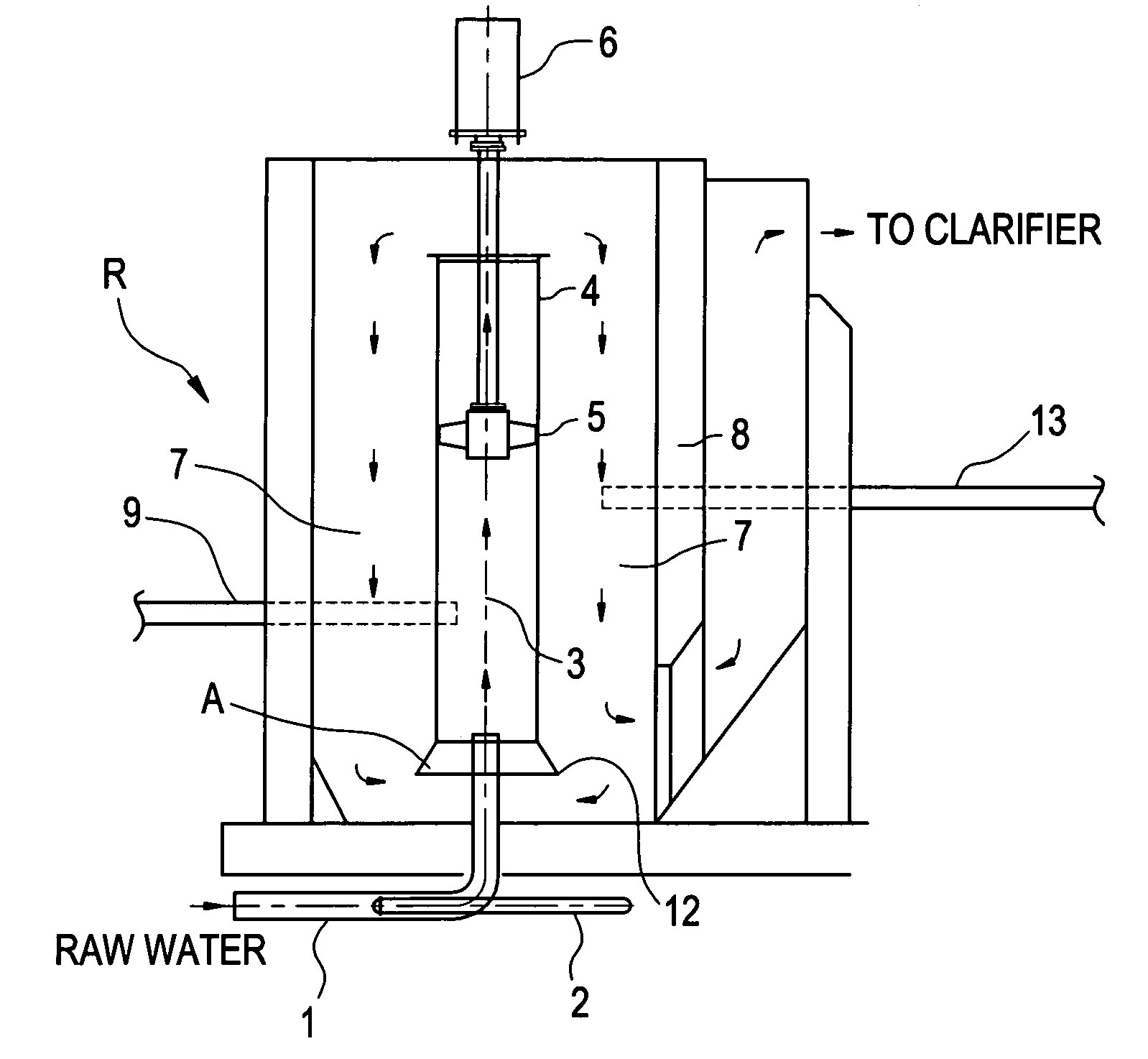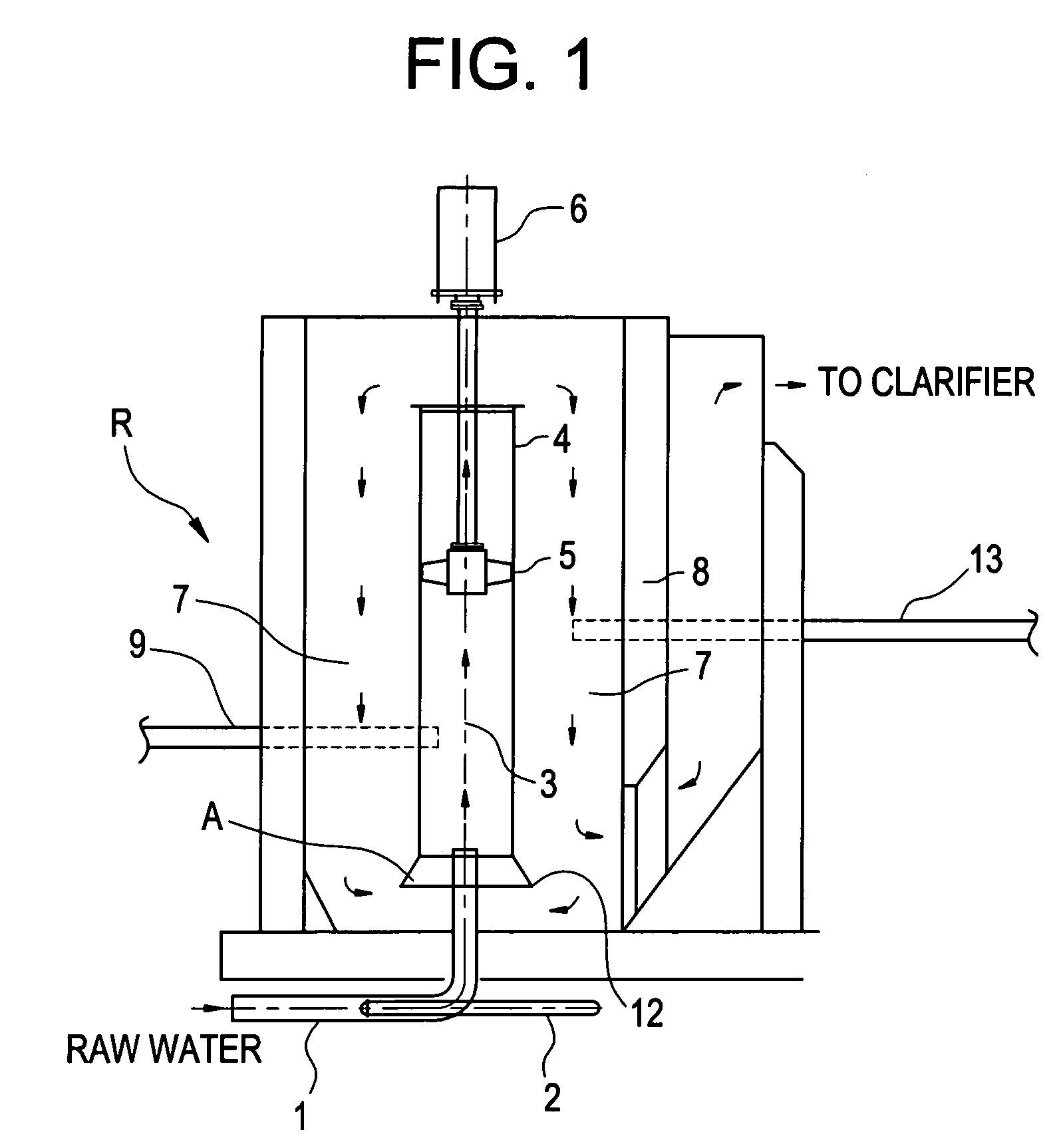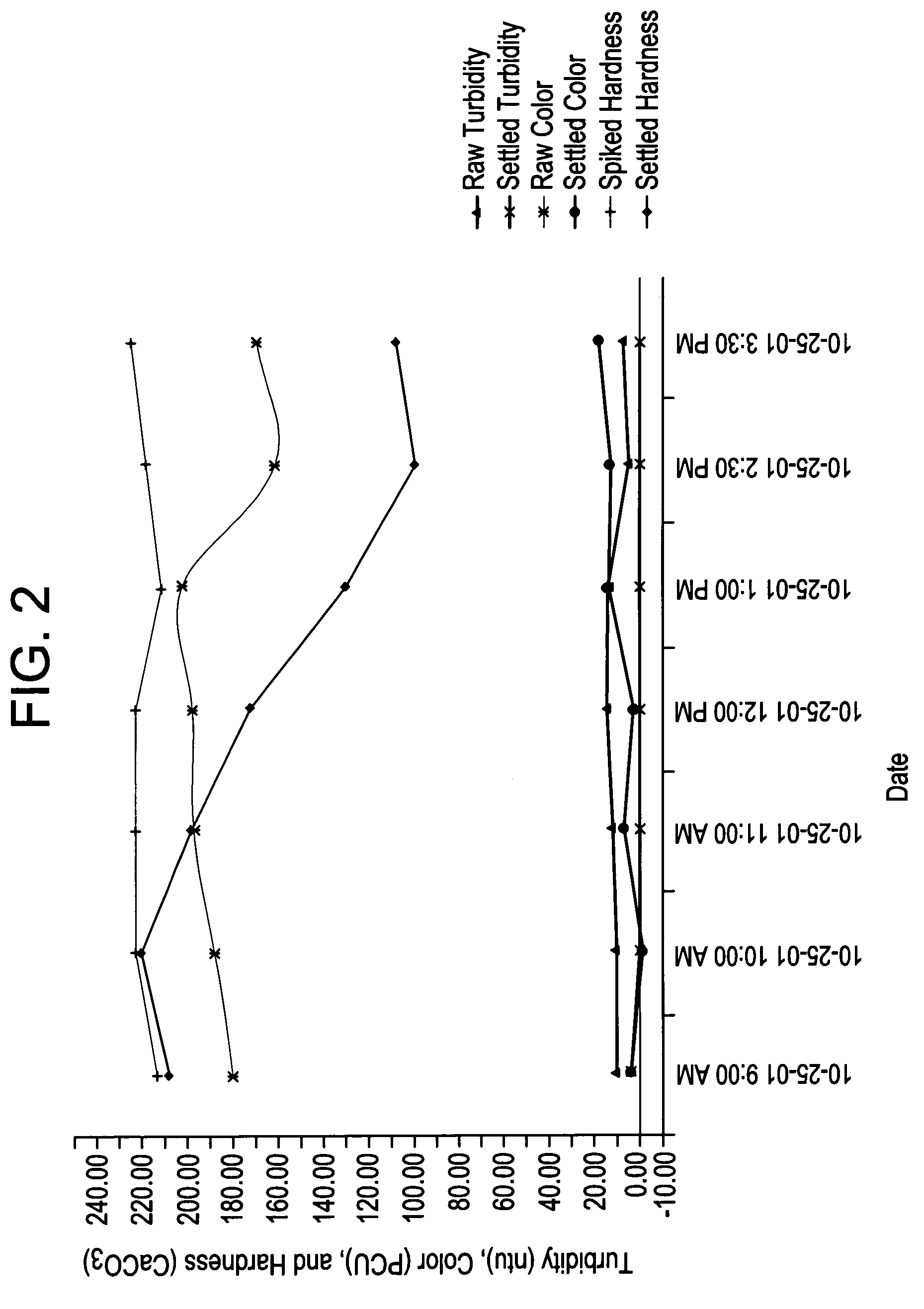Method and apparatus for treating water or wastewater to reduce organic and hardness contamination
a technology of organic and hardness contamination and treatment equipment, applied in the direction of multi-stage water/sewage treatment, other chemical processes, separation processes, etc., can solve the problems of increasing the potential for scaling and post, affecting downstream processes and industrial equipment, and difficult simultaneous removal of these two contaminants
- Summary
- Abstract
- Description
- Claims
- Application Information
AI Technical Summary
Problems solved by technology
Method used
Image
Examples
Embodiment Construction
[0013]As noted above, the large majority of organics are removed most effectively under a completely different set of chemical circumstances than those where hardness is effectively removed.
[0014]Classically, removal of organics from waters has been accomplished primarily via a physical-chemical process known as coagulation. In that process, a metal salt or coagulant (such as ferric chloride or aluminum sulfate) is typically added to the water to be treated. The metal ion becomes ionized in solution and neutralizes physical surface charges on colloidal particles within the water to be treated. The neutralized particles no longer repel each other and can come together. As they come together, organics are absorbed and encapsulated within the metal hydroxide floc which forms (the metal chemically reacts with alkalinity in the source water to form a metal hydroxide, which is insoluble).
[0015]These coagulation reactions normally occur most effectively at nearly neutral pH. Although iron ...
PUM
| Property | Measurement | Unit |
|---|---|---|
| pH | aaaaa | aaaaa |
| pH | aaaaa | aaaaa |
| length | aaaaa | aaaaa |
Abstract
Description
Claims
Application Information
 Login to View More
Login to View More - R&D
- Intellectual Property
- Life Sciences
- Materials
- Tech Scout
- Unparalleled Data Quality
- Higher Quality Content
- 60% Fewer Hallucinations
Browse by: Latest US Patents, China's latest patents, Technical Efficacy Thesaurus, Application Domain, Technology Topic, Popular Technical Reports.
© 2025 PatSnap. All rights reserved.Legal|Privacy policy|Modern Slavery Act Transparency Statement|Sitemap|About US| Contact US: help@patsnap.com



